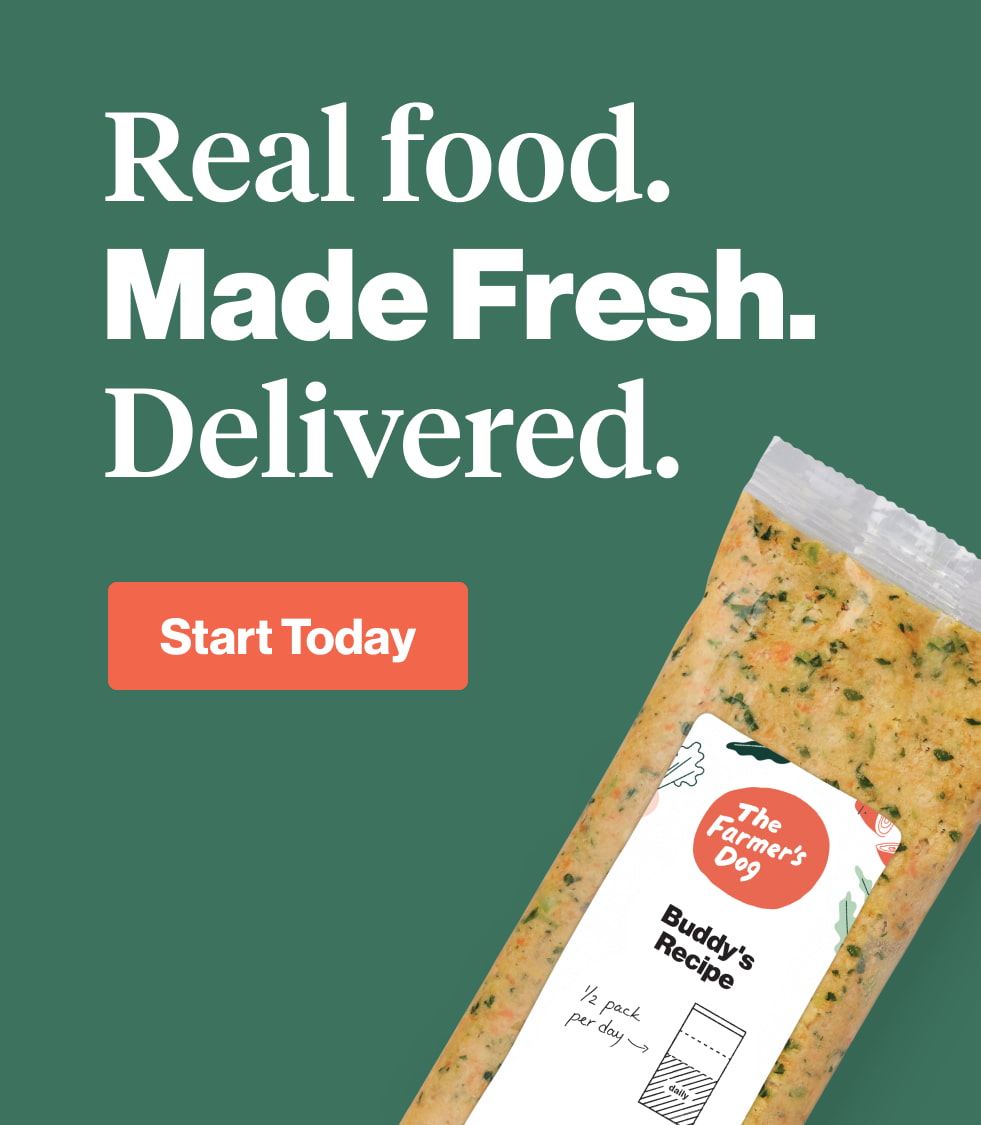Health-conscious consumers are pretty skilled at deciphering nutrition facts labels by now. We know to monitor our sodium intake, avoid high-fructose corn syrup, and understand that even organic, all-natural potato chips are still chips.
Pet food products, however, remain a mystery. Pet food marketing aims to paint a picture of health (think: gorgeous photos of idyllic farms and brilliant vegetables on a bulk, shelf-stable sack of brown kibble), and every company promises to be the best option for your dog. It’s definitely tempting to throw in the towel on label vigilance in the pet food aisle and blindly believe the bags, but as regulations are less strictly enforced in the pet food industry, it’s just as important to scrutinize the labels on the products you’re feeding your dog as it is your own.
The first step toward finding the truly healthiest food for your dog is learning to decipher the food label tricks that most pet companies are using.
First ingredient
Just because an ingredient is listed first on a label, it doesn’t mean it’s the most predominant in the product. Pet food companies know that most consumers are searching for a real meat source in that prized first ingredient slot. It’s for this reason that they use a trick called “ingredient splitting,” listing their ingredients in various composite parts to trick consumers who are simply scanning for that premiere protein.
For example, a product label containing 20% meat and 80% starches could either look like:
Rice (30%), peas (30%), Beef (20%), potatoes (20%)
Or:
Beef (10%), beef heart (10%), long grain rice (10%), brown rice (10%), white rice (10%), split peas (10%), pea protein (10%), english peas (10%), potato (10%), potato starch (10%).
Additionally, pet food labels are created before the product is cooked and processed, when the meat weighs significantly more. Beef loses weight through water evaporation in the cooking process, while rice gains weight. This means any starches end up occupying even more volume in the final product, while the meat portion is lowered (hear more about ingredient splitting and other labeling tricks in the video interview with The Farmer’s Dog founders above).
“With…”
A pet food bag claiming to be filled “with chicken” or “with real beef” is trickier than you’d assume. In pet food speak, “with” simply means that the aforementioned ingredients only need compose at least 3% of the product’s total weight. Many pet owners purchase bags made “with” ingredients they recognize, not realizing that they can be making up a tiny portion of the overall product. The other 97%? Decidedly less familiar.
100% organic
Branding a product “organic” has become a proxy for actual nutrition information. A quick refresher: in order to call themselves “organic,” foods must be made without the use of antibiotics, artificial growth hormones, high-fructose corn syrup, artificial dyes (which, btw, can be made from things like coal tar), artificial sweeteners, synthetically-created chemical pesticide and fertilizers, genetically engineered protein, sewage sludge, and irradiation.
In other words, food deemed “organic” should really just be called “food,” because neither you nor your pup should be eating any of the other stuff, anyway.
But even if they’re organic, cookies, kibbles, biscuits are no substitute for fresh food, and certainly shouldn’t be eaten all day and every day in lieu of it — especially as commercial kibble, even the organic variety, is so highly processed that much of the nutritional integrity of any individual ingredient is lost by the time it reaches your dog’s bowl.
Watch out for bags touting “organix” ingredients, too. Not entirely sure what “organix” means? We aren’t either.
Made “with” organic ingredients
This bold promise of a product being made “with” organic ingredients is similarly tricky to the earlier “with” tactic.
Being labeled as made “with” organic ingredients simply means that 70% of the ingredients in the product are considered organic, while a product labeled “all organic” guarantees that 95% of the total ingredients meet this criteria. But, again, organic doesn’t mean much when an ingredient has been burnt to a crisp and exposed to heat and moisture during extrusion, the process through which kibble is made.
Natural
The USDA defines “natural” as a product that has no artificial ingredients or added color, but doesn’t account for additives like antibiotics, growth hormones, or other chemicals. The term is so broad that the FDA is still struggling to come up with a legal definition for it. Legally speaking, there is no required difference between foods labeled “all-natural” and “natural.” Natural is not necessarily organic, but organic must be considered natural (watch The Farmer’s Dog founders talk about “natural” labeling and other tricks in the video below).
Feed-grade
Feed-grade is a far cry from food, and should be a cue to run in the opposite direction. Pet products with this label are not held to food safety standards and are considered unsuitable for human ingestion.
Practically any ingredient is suitable for a feed-grade product, including waste, fats and grease, and dead animals from farms, ranches, and shelters. Some feed-grade pet products do use higher quality ingredients, but there is no method for consumers to differentiate between feed-grade products.
Human-grade
This term simply means that a product in its entirety (not just individual ingredients) is safe for human consumption. A truly human-grade pet food must be manufactured according to food safety standards and made with 100% food ingredients and human-grade supplements.
This label has everything to do with safety and quality, and little to do with the cooking process. A wide array of pet foods — including kibble, fresh, and dehydrated — can all be human grade, with varying degrees of natural nutrients depending on how they are prepared. By regulation, raw pet foods are not allowed to claim that they are human-grade.
Gourmet
We associate the term with fresh veggies and farm-to-table dining, but there are no legal regulations that determine when this term can be used on food labels.
Grain-free
A product sans-grain is technically free of corn, soy, wheat, barley, and oats. However, grain-free products are not necessarily low-carb; in reality, grain-free dog foods tend to have just as many carbohydrates as dog food that is made with grains, especially when high-starch items — like potatoes — are used to replace grain.
Grass-fed
Though we might often associate “grass-fed” livestock with “free-range,” one does not guarantee the other. Technically speaking, cows can be grass-fed and still contained, only let out to graze for short periods at a time. Though the USDA regulates how the term is used on labels, it does not regulate how, in practice, the “grass-fed” animals are actually fed.
In the end, we recommend feeding only from the dog food companies you know you can trust, and ideally choosing fresh food whenever possible. Stick to foods in forms you can still see and the whole feeding process becomes a lot less tricky.
Image: @jenikrauze




